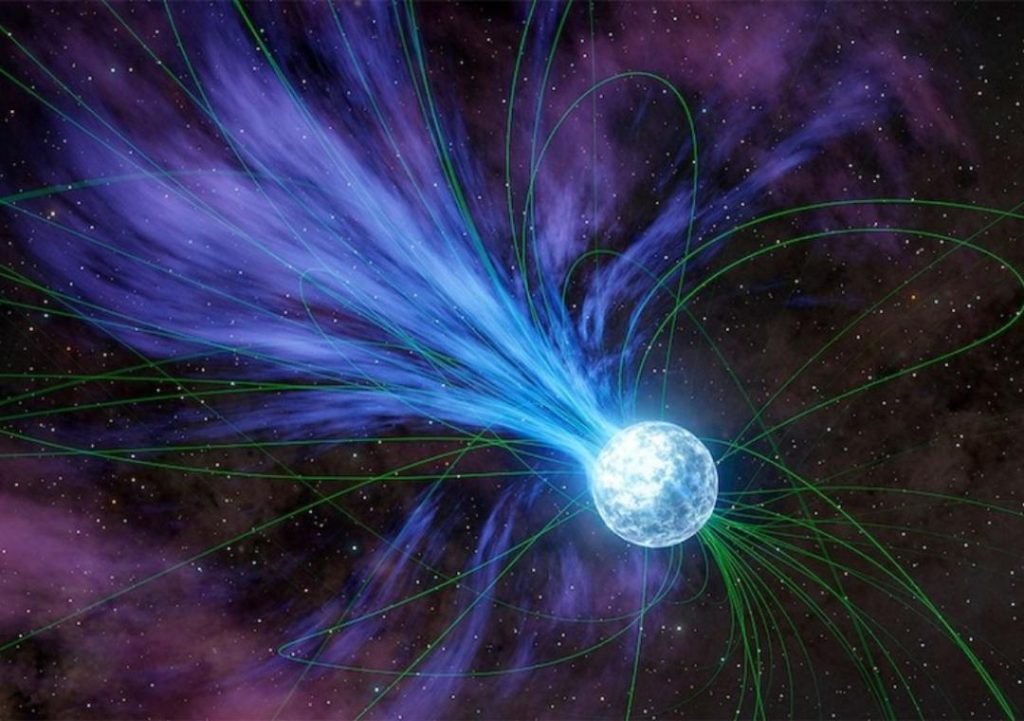
Gold and Platinum Created through Neutron Stars’ Explosions: Study
For centuries, humans have been fascinated by the origins of precious metals like gold and platinum. While we have long known that these metals are abundant on Earth, the exact process by which they were formed has remained a mystery. However, a recent study has shed new light on the creation of these valuable resources, and the answer lies in the explosions of neutron stars.
According to a study led by Columbia University student Anirudh Patel, magnetars – highly magnetized neutron stars – played a crucial role in the creation of elements like gold and platinum. These magnetars, which are incredibly dense objects that form from the remains of massive stars, exploded and released flares that contained these precious metals.
The study, published in the journal Science, suggests that these explosions occurred approximately once per decade in the Milky Way galaxy and annually across the observable universe. This means that the creation of gold and platinum is a relatively common occurrence in the cosmos, and that these metals have been formed and dispersed throughout the universe in a vast array of celestial events.
So, how did the scientists arrive at this conclusion? To understand the process, let’s take a step back and explore the life cycle of a star. Massive stars, which are at least eight times more massive than our sun, have a much shorter lifespan than smaller stars. When these stars exhaust their fuel, they collapse under their own gravity, leading to a massive explosion known as a supernova.
In the case of magnetars, the explosions are even more powerful than typical supernovae. When a magnetar forms, its incredibly strong magnetic field causes it to spin rapidly, building up energy that is eventually released in a massive explosion. This explosion, known as a magnetar flare, is so powerful that it can release as much energy as thousands of supernovae combined.
As the magnetar flare occurs, it releases a vast amount of energy in the form of radiation, including gamma rays, X-rays, and visible light. This radiation contains the building blocks of elements like gold and platinum, which are formed through a process known as rapid neutron capture or r-process nucleosynthesis.
R-process nucleosynthesis occurs when a massive amount of neutrons is released in a short period of time, causing atomic nuclei to capture these neutrons and form heavier elements. This process is incredibly efficient, allowing for the creation of elements with atomic masses of up to several hundred units.
The study’s lead author, Anirudh Patel, explained the significance of the discovery, saying, “We’ve long known that gold and platinum are formed in extreme astrophysical environments, but we’ve never been able to pinpoint exactly where and how they’re made. This study shows that magnetars are the key to creating these precious metals, and that these explosions are a common occurrence in the universe.”
The implications of this study are far-reaching, offering new insights into the origins of precious metals and the formation of elements in the universe. By studying the properties of magnetars and their explosions, scientists may be able to better understand the underlying processes that govern the creation of these valuable resources.
In conclusion, the creation of gold and platinum through the explosions of neutron stars is a fascinating and complex process. By shedding light on the origins of these precious metals, scientists like Anirudh Patel are helping us to better understand the universe and its many mysteries.






